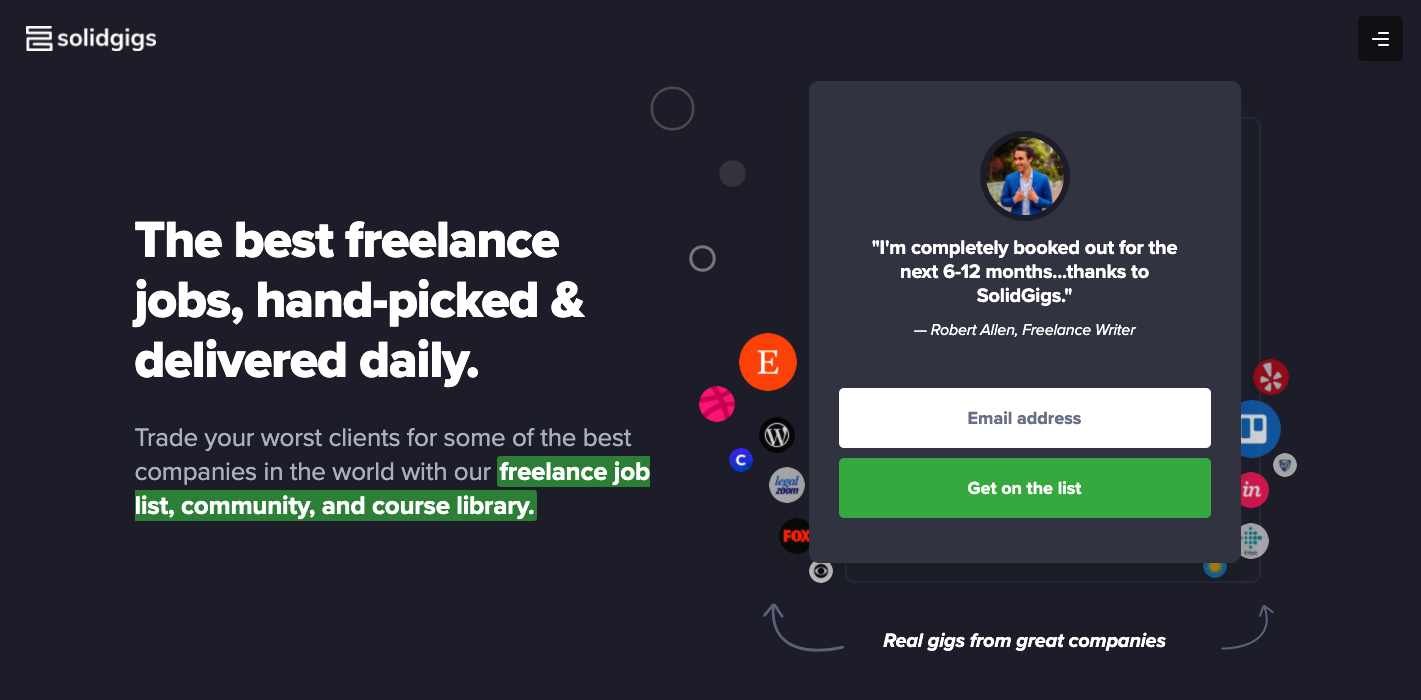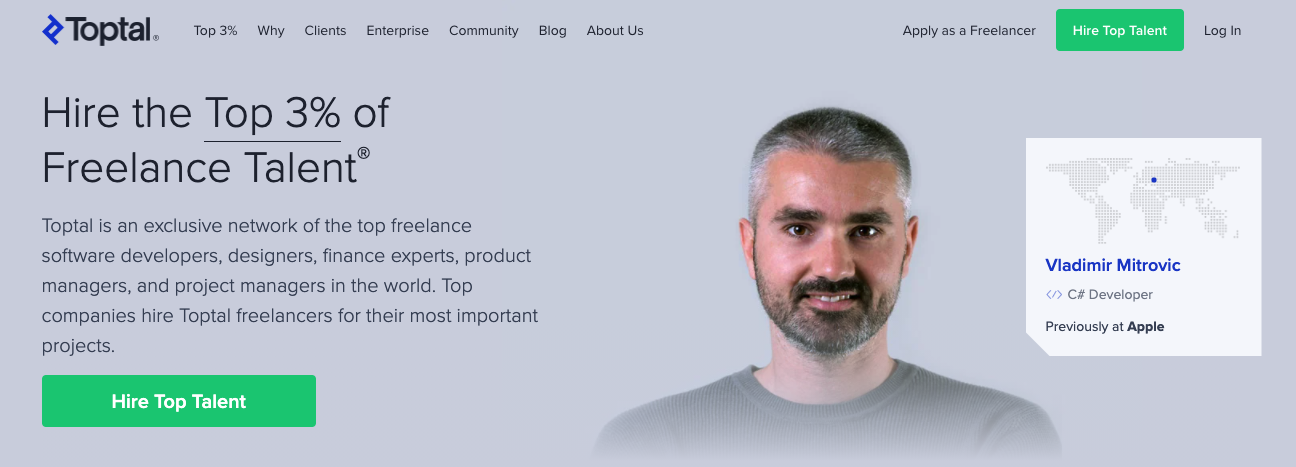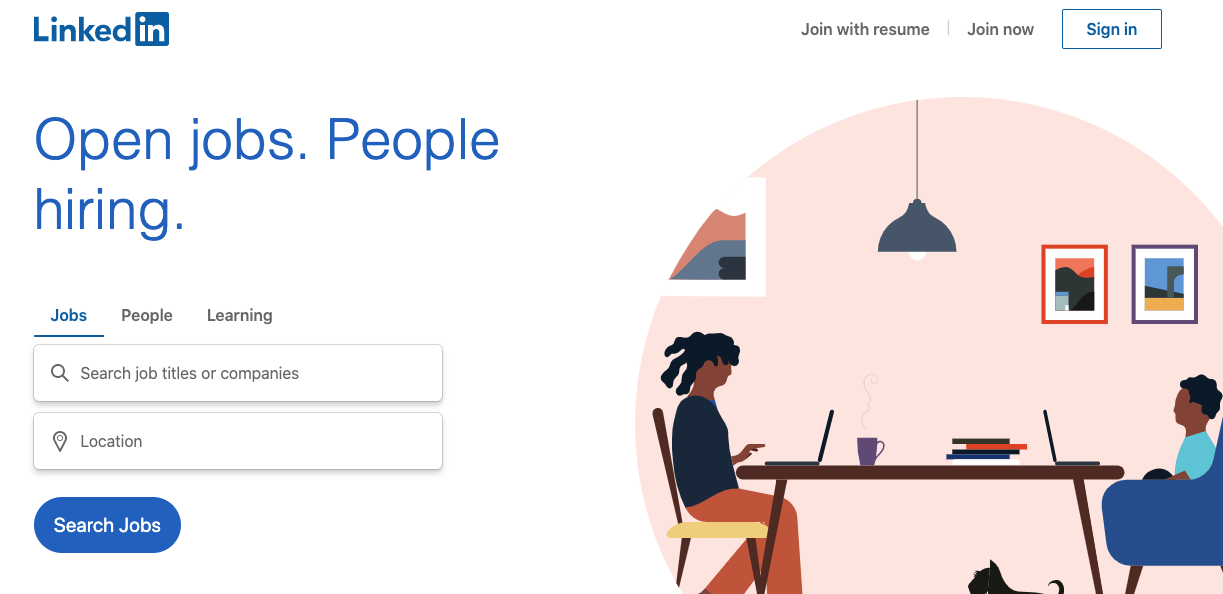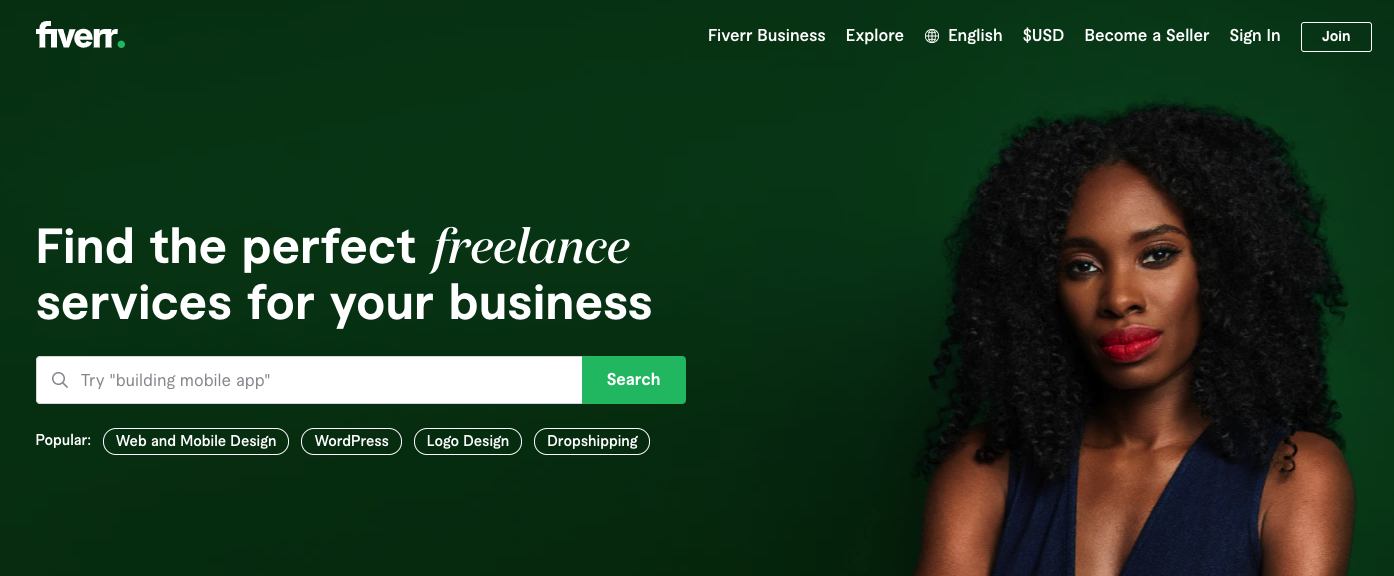FlexJobs is the top remote work online job site. With over 32,000 jobs listed at any given time, it’s a great way for freelancers to find new gigs that work with their erratic schedules.
However, if you’re looking for more ways to gain freelance jobs and get out of the feast and famine cycle, we compiled a list of FlexJobs alternatives to help you find work.
As the gig economy has grown in recent years, competition for jobs is skyrocketing almost as quickly as the available job opportunities. It makes sense to put yourself out there on a variety of platforms.
Each platform has its pros and cons, but they all offer different clients and more chances to snag those hard-to-get projects.
Freelancing has given millions of people the freedom to work when, where and how they choose. However, sometimes that freedom becomes a burden when your income isn’t as steady as you’d like it to be.
That’s why looking for FlexJobs alternatives is so important—the more sites you contribute pitches and resumes to, the more options you’ll have. This gives you the freedom to be more picky about what clients you take on and build a niche reputation for yourself.
Everything on this list is a 100% legitimate platform with plenty of jobs available. We’ll walk you through some pros and cons to help you find the best option for you.
15 FlexJobs alternatives to find more client work
1. SolidGigs
Pros: SolidGigs is a curated joblist – it’s one of the great alternatives to FlexJobs because it’s only sent out once/week, with legitimate jobs chosen for you. While there may be fewer opportunities than on some of the other sites, it’s less overwhelming and more individualized.
SolidGigs goes above and beyond by providing freebies like templates, advice on finding and pitching projects, and a library of resources and tools to help you grow.
They offer a month-long trial for just $2, so it’s easy to get started and see if SolidGigs is a good fit for you and your skillset.
Cons: SolidGigs focuses on writers, designers and web developers. Depending on your area of expertise, you may find less here to love.
This alternative to FlexJobs is designed to help you find gigs, not manage your relationship with clients. This can be a plus or a minus, depending on how you handle your business. SolidGigs doesn’t take any kind of finder’s fee, and you’re free to set your own rates, but you are also responsible for getting yourself paid. You can read our full SolidGigs review for more info.
2. Freelancer
Pros: Freelancer.com is a great FlexJobs alternative, because it is another huge platform. Millions of gigs have been posted here, and the site is used by huge businesses like Amazon, Facebook, IBM and NASA.
There is a huge variety of projects listed on Freelancer, so odds are you’ll be able to find something that you’re qualified for, whether you are a coder, writer, designer or something else.
Freelancer.com also has a relatively low subscription fee ($5.00 per month gets you 50 bids, plus a project fee when you win a job).
Global customers rely on Bloomberg Sources to deliver accurate, real-time business and market-moving information that helps them make critical financial decisions. Please contact: michael@
Cons: There is no screening process on Freelancer.com. Anyone can sign up, which means that many members, possibly without a lot of skill, are willing to work for very low fees. As you’re starting out, it can be difficult to find reasonable jobs to bid on.
There is likewise no screening for employers. Anyone can post a job, which means you need to be careful about the kind of work you accept. Freelancer.com does have a built-in “Milestone Payment System” that helps guarantee you will be paid for your work at intervals, if you choose to use it.
3. Toptal
Pros: Toptal has a lengthy screening process for both employers and freelancers. They claim to accept only the top 3% of talent. The amount of money you will make on Toptal will be more than most other platforms.
As a FlexJobs alternative, Toptal is different in that it’s almost like an employee relationship in some ways. They recommend freelancers for each project, so once you pass the initial interview process, the amount of pitching you have to do isn’t too bad, although you do still submit applications and interview with clients.
Additionally, Toptal has no fee for freelancers at all. This is how they attract top talent. Toptal makes money by adding a markup to clients. So sure, you could make more money interfacing directly with clients, but Toptal does the selling work for you.
Cons: The upfront screening process is time consuming and challenging. There are four stages, including a final 10-40 hour project, which you won’t be paid for. And remember, only 3% of applicants make it past that final test.

Many standard FlexJobs alternatives help you connect with gigs, and then you are responsible for completing tasks and collecting payment. Toptal instead pays its freelancers directly, then charges clients directly. They don’t share the markup publicly, so you’ll never truly know if you’re being paid what you’re worth.
Lastly, Toptal only operates in a few, mostly tech-based categories. If you are a graphic designer or writer, this is not the platform for you.
4. Upwork

Pros: Upwork is one of the oldest freelancing platforms, and it has absorbed many other companies, making it a powerhouse. There are jobs worth collectively over 1 billion dollars posted every single year in almost any category imaginable. Odds are, there’s one for you.
There is no monthly subscription fee to join Upwork, so if you’re looking for low-cost alternatives to FlexJobs, Upwork may be a good place to start. Keep in mind that you do pay a small fee for each job you apply for.

Upwork does vet clients, and they are mostly based in the US. So while there are low-ball projects on the platform, there are lots of legitimate jobs to bid on, too.
Cons: Upwork has an extremely high fee structure, especially for newbies. They take 20% off the top for each client you work with. If you’re lucky enough to find long-term clients, the fees do drop progressively.
Because Upwork is so large, it’s extremely competitive. It’s hard to find gigs that are a good fit for your talent, have a reasonable budget, and aren’t already taken.
It can take a long time to get paid on the Upwork platform. No invoicing is done until you and your client have both reviewed the project. Even then, money doesn’t change hands until ten days after the billing period ends. In some cases, it can be weeks before you see a paycheck.
5. Indeed

Pros: At the moment of writing this article, there are over 24,000 freelancing jobs posted on Indeed. It’s one of the more underrated FlexJobs alternatives.
Indeed tags every job posting on their board, so it’s easy to filter remote and freelancing gigs. You can set alerts for jobs with certain skills, or just post your resume and see if anyone contacts you.
Indeed professes to have had a hand in 65% of all online hires in the US. So it’s definitely a great place to look for gigs. And because it’s just a standard job board, there’s never any fee to apply.
Cons: Because Indeed is not specifically made for freelancers, it may take time to sift through all of the jobs to find the ones that apply to your specific skill set. It can be a bit overwhelming.
Likewise, you’re competing with everyone, not just freelancers. Some people may apply to remote work positions even if they already have a job.
Also, be careful which jobs you apply for – there is no screening process, and there are some companies who will take advantage of an application to skim your information and then send you endless spam.
6. Truelancer
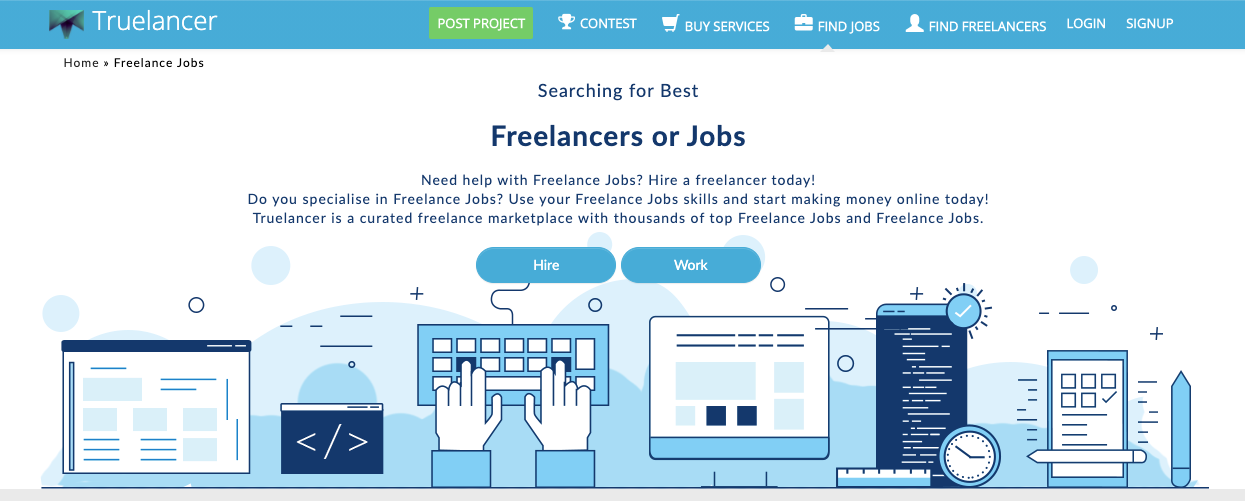
Pros: Truelancer is your basic, run-of-the-mill job site. It’s a smaller company, but has been around since 2014 and still hosts a large volume of projects.
Truelancer assigns a project manager to each client, so there is a decent amount of support if problems arise.
Also, Truelancer is one of the only alternatives to FlexJobs that is focused outside of the US. So if you’re working in the eastern hemisphere, you may be able to find projects that work more closely with your home time zone.
Cons: There is some buzz on Internet reviews that payment can be hard to collect. Not every seems to have this problem, but it’s something to be aware of as you start pitching for jobs. Do some background research on each company you are applying to work with before proceeding to make sure it is a legitimate job posting.
They have a reputation for being a bit heavy-handed on the upsell. While Truelancer is free to join, you only get 20 proposals each month, and fees are 10% with a free account.
7. SimplyHired

Pros: SimplyHired is another FlexJobs alternative that isn’t strictly a freelance site. However, you can input what type of work you are interested in and get an email list with the jobs that best fit your description.
There is no fee to join, and it never hurts to put your resume out there!
SimplyHired is also very user-friendly, so you can search for exactly what you want and only spend as much time as you want to sorting through the different jobs.
Cons: A lot of the jobs you’ll see on the SimplyHired platform have been listed elsewhere. This is helpful to employers looking to hire freelancers, but if you’re the one looking for work, be prepared for stiff competition.
You are managing your own partnerships here. This means you can set your own rate, but you’ll be doing all of the work in managing deadlines, communicating with clients, and billing.
8. ZipRecruiter
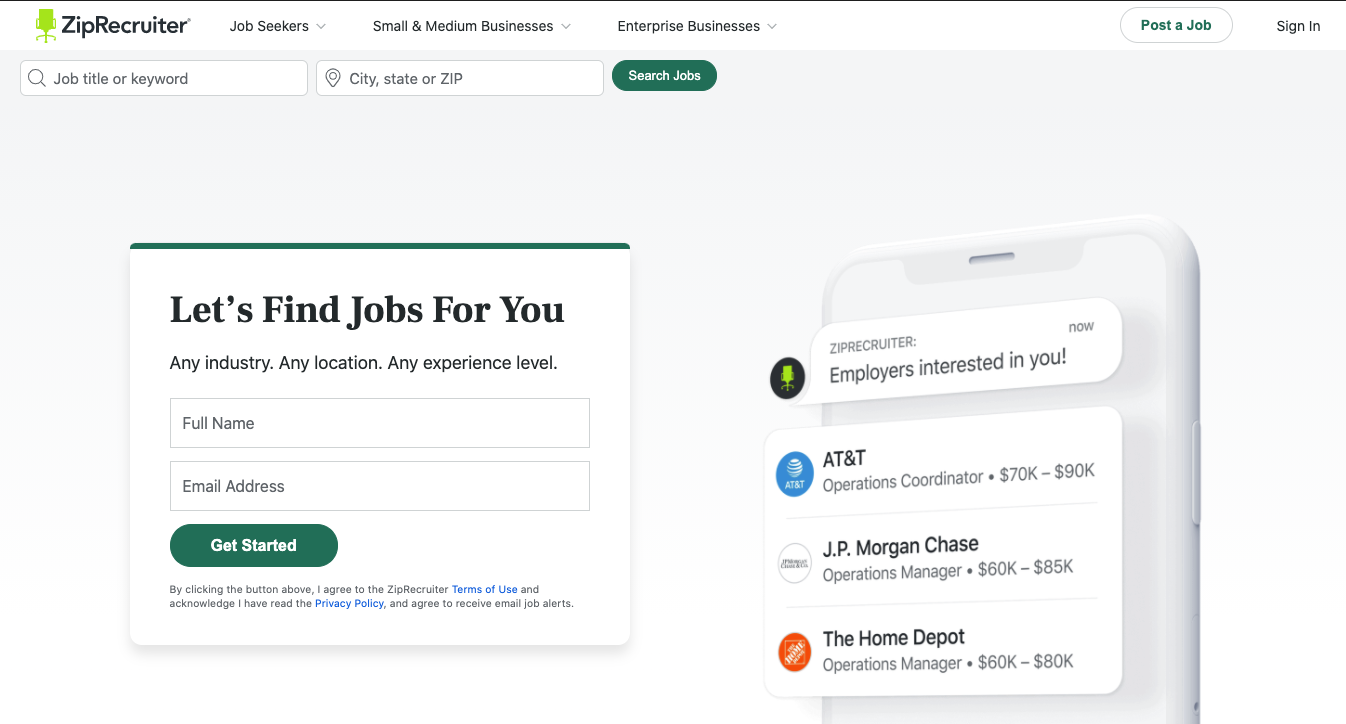
Pros: ZipRecruiter is a massive job board.
There are millions of job postings, and there are no limits on what areas of expertise clients are looking for. This means that if you’re a non-traditional freelancer (not solely focused on web-based work), there are still opportunities available to you.
And there’s no fees!
Cons: The cons here are the same as the pros. It’s an enormous, non-personal job site. It is extremely overwhelming to sift through the listings to see if one is a good fit for you.
The search function helps, of course, but you may wind up spending more time digging through job postings than actually applying.
Additionally, when you’re looking for FlexJobs alternatives, you probably aren’t sitting at your desktop. ZipRecruiter isn’t quite as mobile friendly as some services, so it can make searching away from home frustrating.
9. LinkedInJobs
Pros: LinkedIn was pretty much made for the art of self-promotion. So one of the main pros to this platform is that people are expecting to find pitches, networking requests, and job queries if they come to LinkedIn.
Not everyone knows that LinkedIn has a job search function that works as one of the less obvious alternatives to FlexJobs. Just plug in your region and top skill, and you’ll find a huge list of job openings.
Cons: This is not a curated job list. Instead, LinkedIn is simply a place to search for and find postings. This means that a significant time investment is required to make any headway.
While you can definitely find some great leads through the job search function – your time is likely better spent polishing your resume and portfolio and making sure they are integrated with your LinkedIn profile. Recruiters are more likely to offer you interviews for projects than a cold pitch.
10. Fiverr
Pros: Fiverr is a well-known gig economy platform that attracts employers and freelancers from all over.
Fiverr has been in the game a long time, and they know how to get things done. They have secure payment methods and host a huge variety of projects.
It’s a great entry-level alternative to FlexJobs, as users create their own gigs. You don’t have to pitch something you’re uncomfortable doing, instead, you offer what you are willing to do and how much you want to be paid, and clients seek you out.
It’s free to join and user-friendly.
Cons: Fiverr has a policy that clients can decline a project even if it’s completely done. So if your client is unhappy or changes their mind, you’ll be out the time and won’t get your paycheck.
The Fiverr admins have strict policies and rules in order to keep clients happy at almost any cost. Even if you break a rule on accident or out of ignorance, your account can be quickly banned.
11. Remote
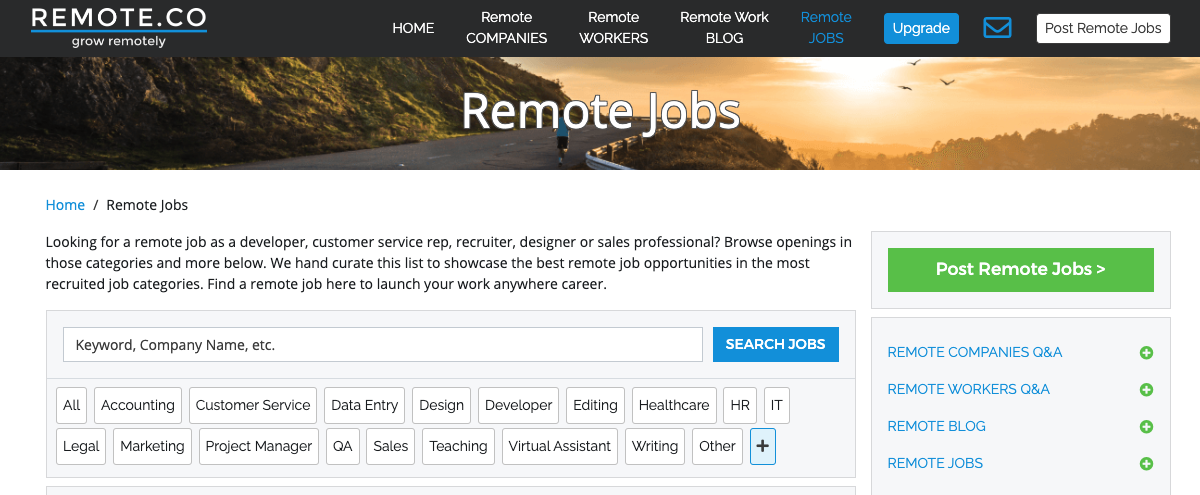
Pros: Remote.co is a jobs board, but they only host remote work listings. This means that you don’t have to sift out full and part-time jobs, and those that require you to be in a certain location.
They have an easy-to-sign-up-for email list, where you can put your preferences in and get a curated job list sent to your inbox at no cost. They also have a handy blog with tips on improving your remote work game.
Cons: The search function is clunky. If you don’t have a good idea of what you’re looking for, you may have a hard time finding quality leads on the site.
The jobs on remote.co aren’t posted here — they are found via algorithms and web crawlers. So, while you’re getting a paired down list of what is on the web, you’re still getting jobs that are posted multiple places and will likely be difficult to compete for.
12. TaskRabbit

Pros: TaskRabbit has been around longer than most FlexJobs alternatives on this list. It’s a simple idea: you can sign up for a variety of tasks that fit your schedule.
TaskRabbit has a good reputation, and in general people find skilled workers and those workers get paid. For people just starting out in freelancing, it can be a quick way to generate some income and meet potential clients.
The TaskRabbit service is efficient and easy to do from your phone, on your lunch break, after regular business hours, etc.
Cons: TaskRabbit was not built for professionals. It’s more of an in-a-pinch handyman kind of platform. It may be difficult to find tasks that fit your specific skill set.
Many of the tasks require you to be present in-person. So you have to find jobs that are available in your specific geographic area.
TaskRabbit may be a great way to get started, but you’ll never earn a lot of money on the site. Still, you can pick up a gig or two to fill in gaps or to get the ball rolling on your freelance career.
13. DesignCrowd
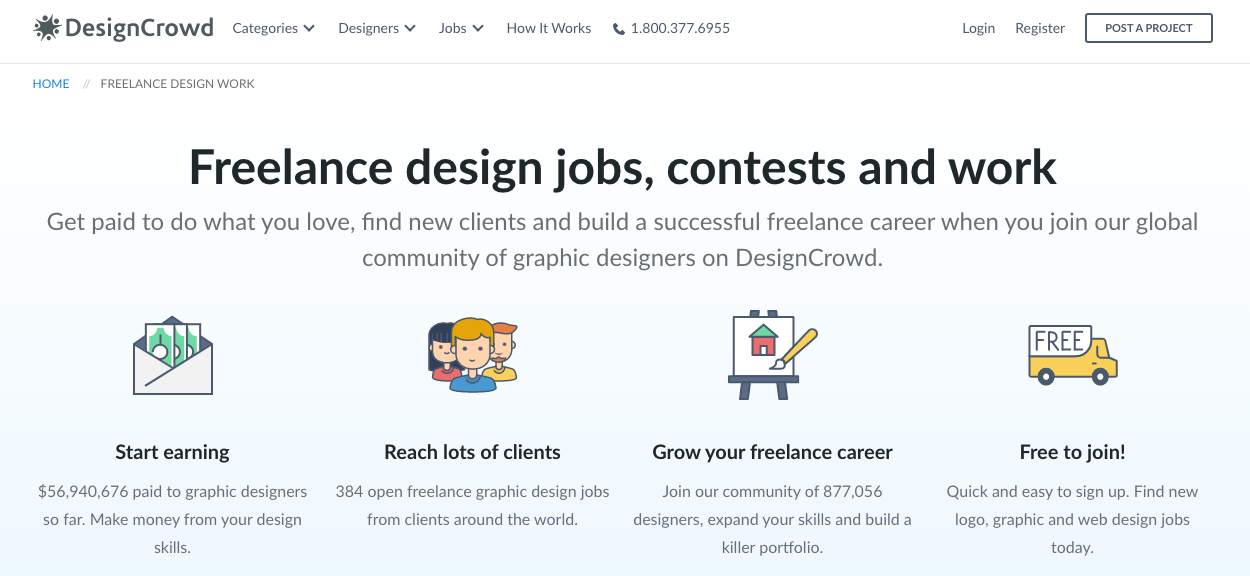
Pros: DesignCrowd is one of the original alternatives to FlexJobs for designers. It’s free to join and easy to use.
Because of the way it’s set up, you often end up working with other designers from around the globe. This is a fun way to build relationships and can help sharpen your skills and even lead to other paying jobs.
Cons: DesignCrowd mainly works through contests – you join several other designers in submitting designs to fit a brief, but you only get paid if your design is the one chosen. This might be a great way to get experience, but it’s not a great way to earn money.
Like Fiverr, DesignCrowd is very client-focused, and employers can decline one-on-one jobs if they don’t like them. You could easily spend a lot of hours on this platform without making any money.
DesignCrowd is only for designers, so if you are a writer, coder, or some other kind of freelancer, you’re out of luck on this one.
14. 99Designs
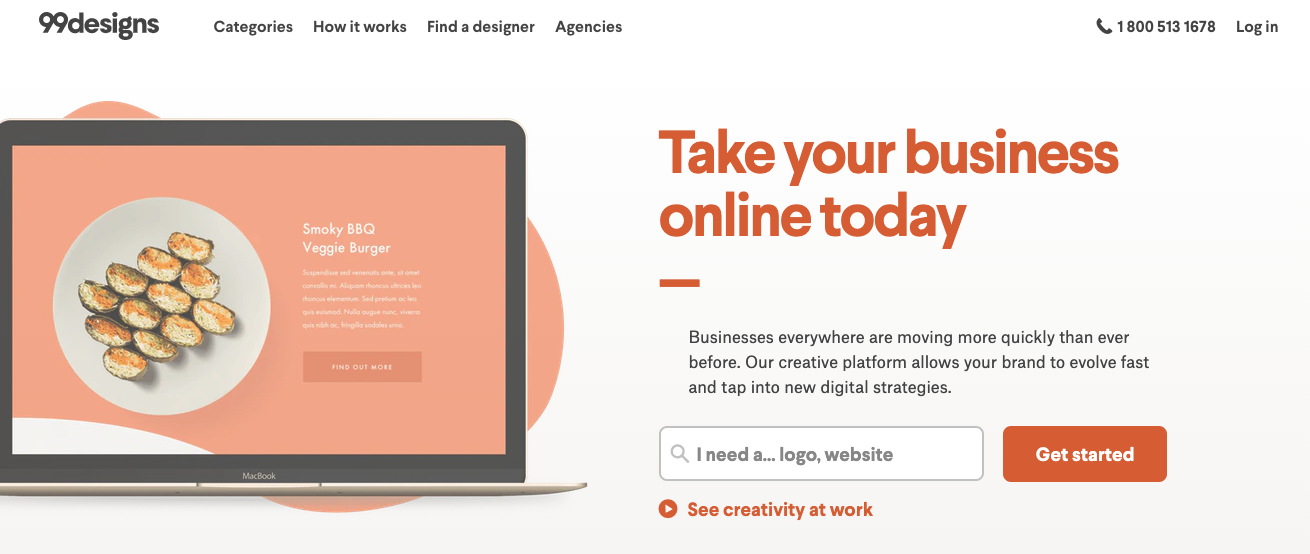
Pros: 99Designs gives designers the opportunity to earn a fair price for simple designs.
It gives students and newcomers a chance to see how the market works and what designs clients love. Just browsing the site can be inspirational and help you learn a lot about design.
At any given time, there are open projects to participate in, so it’s pretty easy to choose your own hours and areas of interest.
99Designs has a good reputation as a secure platform. When your design is selected, you can be sure that you’ll get the money you are owed.
Cons: Like DesignCrowd, 99Designs is a mainly contest-based alternative to FlexJobs. This means that it’s very competitive and difficult to get paid work.
Likewise, it is a design-only platform. It doesn’t cater to freelancers of all occupations and skill sets.
15. Designhill

Pros: The last of our FlexJobs alternatives is another design-centric platform. Designhill is a bit different than the others on this list.
While you can apply for gigs and enter contests, Designhill also offers the opportunity to design and sell your own products. You can post T-shirts, mugs, and fine art prints and sell them directly to the public.
The Designhill website is full of tips to help you get started creating your own brand. And if you do compete in the client projects, rest assured that there is a screening process, so you’ll be working with high-quality clients willing to pay what you’re worth.
Cons: Starting a full design brand is not the easiest entry into freelance work. You’ll spend a lot more time marketing and promoting yourself than you will actually designing. If that’s something you love, go for it!
There is a rigorous screening process for freelancers as well as clients. This ensures that the site continues its high-quality mission.
Now go find work!
There are almost endless alternatives to FlexJobs, so there’s no need to stay in a freelancing rut. If you’re in a sudden lull or just hoping to find new streams of revenue, hopefully this list gets you thinking about the different platforms you can put yourself out on.
Keep the conversation going...
Over 10,000 of us are having daily conversations over in our free Facebook group and we'd love to see you there. Join us!


